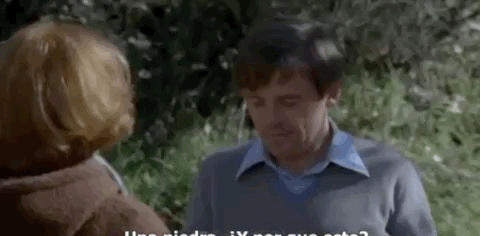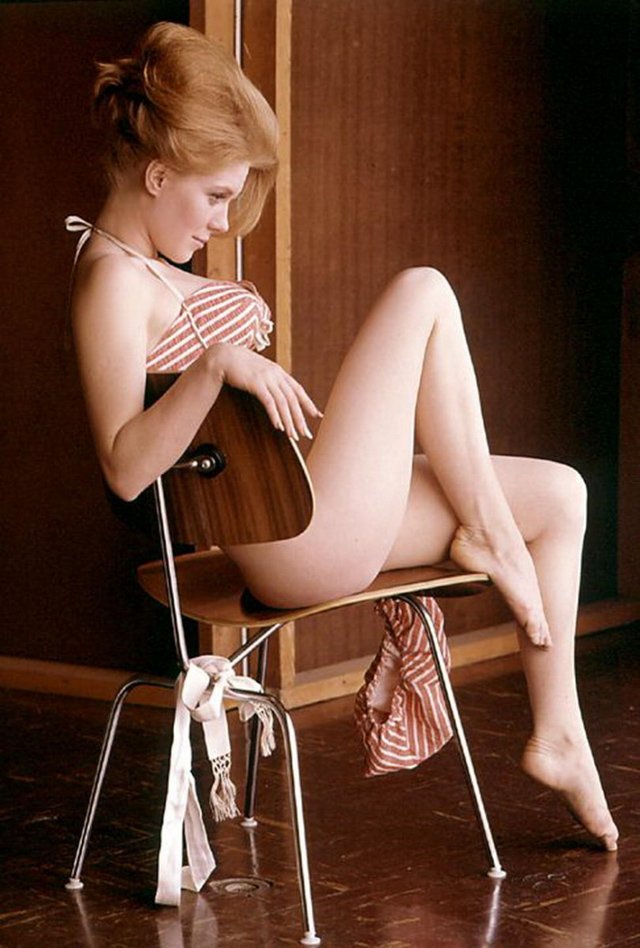How to Bed Women With Magic
/It was announced that Sam Raimi is going to remake the 1976 classic (in my opinion) film, Magic.
The original starred Anthony Hopkins, who was supposed to be this brilliant ventriloquist and magician. Yet this is what his French drop looked like.
He goes on to seduce Ann Margret with a Do as I Do routine. I’m not kidding. For you younger readers (and you don’t have to be that young—she was before my time too) this is Ann Margret.
She’s an all-time, easy 10 out of 10.
And here’s Anthony Hopkins.
Like you, he’s a generous 4.
And yes, he really beds Ann-Margret’s character by doing a Do as I Do routine.
Not something that looks like a Do as I Do routine. He’s doing the actual beginner’s book method for a Do as I Do routine with a key card and all of that.
I’m going to go through this scene and tell you what he’s doing that makes it believable that he could seduce one of cinema’s hottest women with one of the simplest card tricks there is.
Now, to be clear, Hopkins’ character is fucking insane in this movie. And in this scene as well. You shouldn’t really take things as far as he does in this scene. You shouldn’t be trying to manipulate people into having sex with you with something Mac King taught you after a commercial break on World’s Greatest Magic.
But you can still take some of the techniques he’s using here to give tricks more weight and resonance. These are things I’ve written about on this site frequently.
Here is that part of the movie. The clip is 9:30 long. There’s some set-up to the trick. Then there’s the performance of the trick. Then the clip of him balling her brains out. If you’re unfamiliar with this movie/scene, it’s legitimately worth your time to give it a watch.
1:00-1:50 - Techniques: Hook & Cast - Long before the two of them are ever seated at the table, Hopkins sets a Hook for the trick by talking about his mentor Merlin and his wife. Merlin and his wife used to do fake telepathy with cards. But as she was dying they tried it for real, and Merlin was able to read her mind.
I often write about expanding magic beyond the limits of the trick itself. That’s what he’s doing here. He’s giving the trick a history. The “story” of the effect exists outside of the few minutes the trick takes place.
I’ve also written (more in my books than on the site) about creating a “Cast” of people to populate the fiction of the trick. That too is what he’s doing with Merlin and his wife.
1:50-4:30 - Technique: Buy-In - Here he performs the trick for the first time and it fails. Asking someone to take the time to watch you do an effect and have it not work is something many magicians aren’t comfortable with, but it’s very powerful
I frequently like to incorporate some element of failure into my presentation for a trick. (See November 2019 for a series of posts on this.) Not because it makes the trick seem “more real” but because it confuses people into just exactly how the thing they’re seeing is fake. For example, if I do the movements of a coin vanish but without vanishing the coin and I’m like, “Can you see it?” You say you can. That’s a failure, so I’m frustrated. I try it again and this time I actually vanish the coin. “How about now?” I ask. Now the coin is really gone, but I act as if I don’t know if you can see it or not. This makes you less likely to think I ditched the coin somewhere. Because if that’s all the deception was, why would I have thought it worked the first time when the coin was clearly visible? “Failure” is a red-herring clue to methodology that spectators are usually not prepared to handle.
There’s other Buy-In elements here as well…
Hopkins’ character is yelling at her to take it seriously. You don’t want to genuinely berate someone like this. But asking someone to buy into the effect by changing their attitude is a powerful technique.
He also utilizes time so well here. In the second go-around of the trick it takes him 50 seconds to tell her what her card is, even though we know that he knows it immediately. Rushing your magic is the death of suspense and mystery, but it’s also something that 95+% of magicians do. Slow down.
7:20-7:40 - Technique: Reps - What does he do when he gets her card right? Does he say, “Ta-daa”? Does he make a joke? No, he slumps in his chair and mumbles to himself, “I didn’t fail. I didn’t fail.”
The idea of Reps is to blur the ending of an effect. What might you do afterwards if you had really just done what you pretended to do? Would you excitedly call your mentor to let her know the trick worked? Would you take an aspirin because your head was aching? Or would you slump in your chair and mutter, “I didn’t fail,” because you’re a sad-sack, piece-of-shit who nothing goes right for?
Any of these things will give the effect more resonance than just moving on to another trick or making a joke.
Now, here’s the part where I have to fucking spell shit out for the people who will inevitably write me because they’re misinterpreting this post.
The title of this post, “How to Bed Women With Magic,” is a joke about the clip I’m using. Not actual advice.
I don’t think you should scream at your spectators.
I don’t think you should manipulate them into fucking you while your ventriloquist dummy simmers in the other room.
I do think it’s okay to sometimes “blame” the spectator for something not working, if your goal is to get them to engage more deeply with the experience. (Not if your goal is—as I said—to stick your dick in them.)
The purpose of this post is not to get you laid. It’s to give an example of the power or some of the extra-presentational techniques I’ve written about, and how they can be used to make some of the simplest tricks feel un-trivial. Too often magic feels like a throwaway thing. And you can’t get around that with stronger tricks or faster tricks or more jokes (these are techniques most often used by magicians when they’re worried about how their tricks are going over).
But you can generate less trivial interactions by making the experience of the trick more engaging, which is what these techniques do. The “magic” demonstrated in the clip above is not that these techniques will allow you to bang Ann Margret. It’s that these techniques can be used to make one of the first tricks you learned interesting enough that it was presented in five-minutes of real time in a major motion picture.







